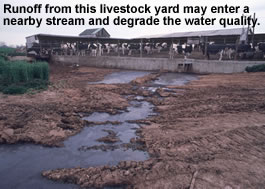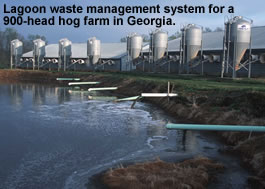
 |
| Home > Policy Issues > Nutrient Management > Introduction | ||||||
IntroductionSignificant changes in agriculture in recent years have caused the industry to become an increasingly large contributor to water pollution, presenting a challenge for states. Incidents, such as the spilling of millions of gallons of hog waste into the waters of North Carolina, have prompted fears over the safety of current agricultural practices. Also of concern is the introduction of nutrients into both ground and surface water. Excessive nutrients, especially phosphorous and nitrogen, have created a “dead zone” in the Gulf of Mexico, while nitrates (which are harmful to human health) have been found in private drinking wells in California. |
||||||
|
||||||
In the late 1990s, some states, in order to regulate water pollution, made nutrient management plans a requirement for most agricultural operations. Only recently has the U.S. Environmental Protection Agency (EPA) handed down a set of rules requiring certain agricultural operations to have a nutrient management plan. With the agriculture industry changing frequently, it is important for states, in order to protect the environment, to have an effective tool for monitoring water pollution. This web site offers the tools necessary to protect your state’s waters from agricultural pollutants by implementing a nutrient management plan, including talking points, press clips, a fact pack, research, and other background information. We may have other useful materials on this subject, which are not posted on our web site. Please feel free to contact us at info@serconline.org or call our office in Madison, Wisconsin, at (608) 252-9800. If you’ve used this site and found it helpful or, if you have suggestions about how it could be made more helpful, please let us know. Feel free to use the sample bill text included here in your state. If you do, please notify us. |
||||||
| This package was last updated on May 12, 2004. | ||||||

